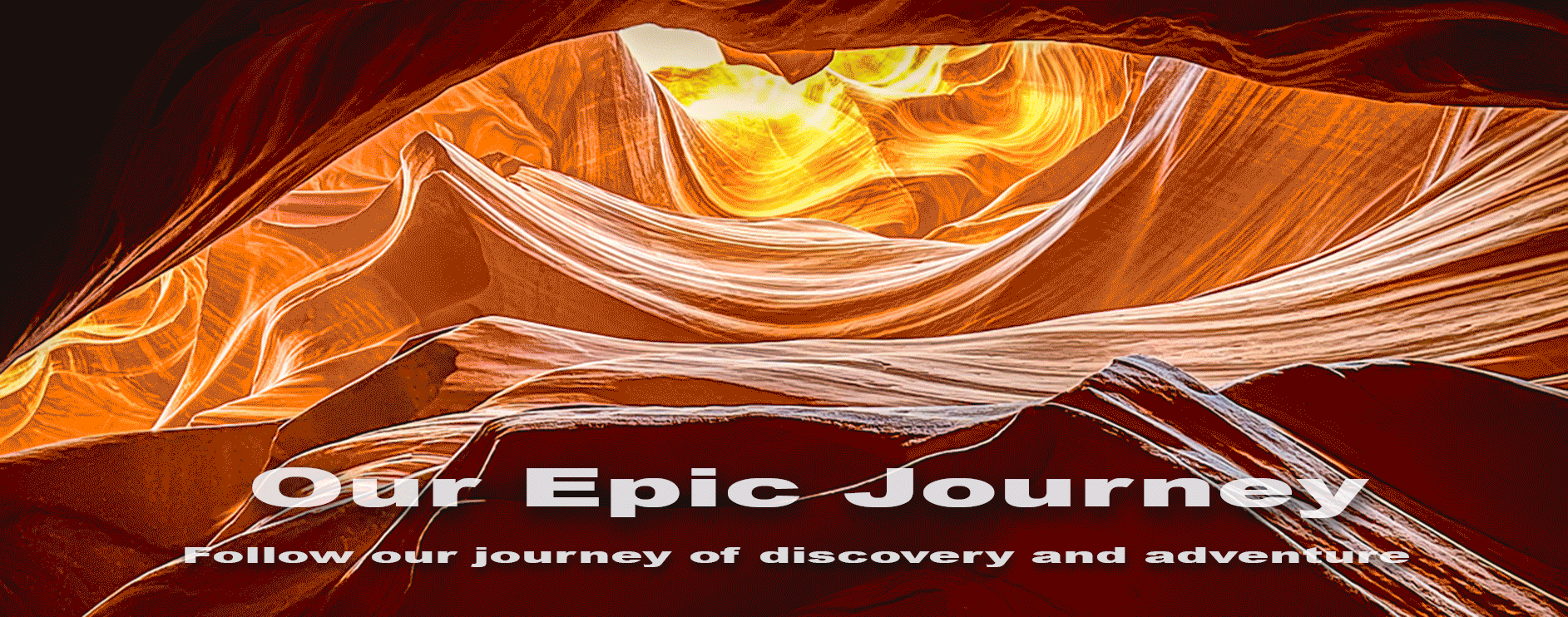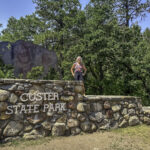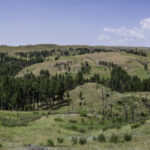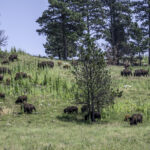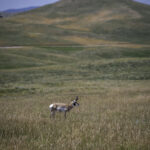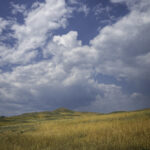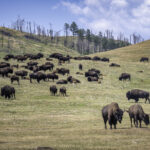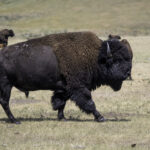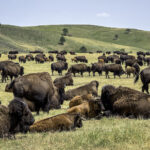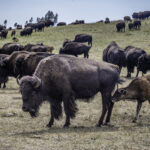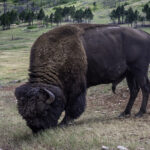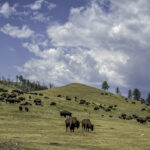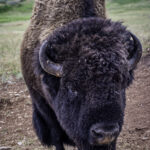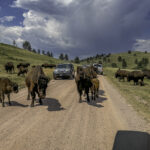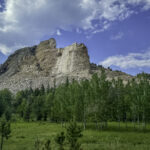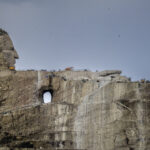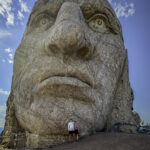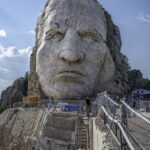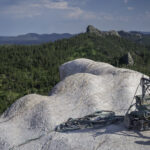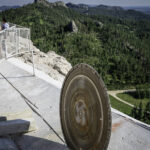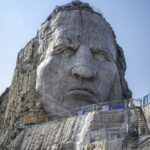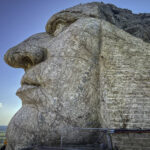 Nestled in the western part of South Dakota, the Black Hills are a stunning range of low mountains rich in history and natural beauty. Named for their dark appearance from a distance, due to the dense pine and spruce forests, the Black Hills have been a sacred place for Native American tribes, particularly the Lakota Sioux, for centuries. In the late 19th century, the discovery of gold in the area led to the Black Hills Gold Rush, bringing an influx of settlers and miners, and sparking conflicts with the native tribes. Today, the region is renowned for its breathtaking landscapes, including the iconic Mount Rushmore, and offers visitors a glimpse into the past with attractions like the historic town of Deadwood.
Nestled in the western part of South Dakota, the Black Hills are a stunning range of low mountains rich in history and natural beauty. Named for their dark appearance from a distance, due to the dense pine and spruce forests, the Black Hills have been a sacred place for Native American tribes, particularly the Lakota Sioux, for centuries. In the late 19th century, the discovery of gold in the area led to the Black Hills Gold Rush, bringing an influx of settlers and miners, and sparking conflicts with the native tribes. Today, the region is renowned for its breathtaking landscapes, including the iconic Mount Rushmore, and offers visitors a glimpse into the past with attractions like the historic town of Deadwood.
We found the Black Hills to be a perfect blend of natural wonder and historical intrigue. The rugged beauty of the mountains and forests provides a serene backdrop for exploration, while the rich tapestry of stories from the gold rush era and the cultural significance to the Lakota people add depth to the experience.
Custer State Park, boasts a rich history that dates back to its establishment in 1912. Named after Lt. Colonel George Armstrong Custer, who led an expedition to the area in 1874, the park was created to preserve the natural beauty and wildlife of the region. Initially, the park’s development focused on conservation and recreation, with the Civilian Conservation Corps playing a significant role in the 1930s by constructing roads, bridges, and buildings that still stand today.
One of the park’s most remarkable achievements is the successful reintroduction and management of the American bison, commonly referred to as buffalo. Once near extinction due to overhunting in the 19th century, bison were reintroduced to the park in the early 20th century as part of a conservation effort. Today, Custer State Park is home to one of the largest publicly owned bison herds in the world, numbering around 1,300 individuals. Each fall, the park hosts the annual Buffalo Roundup, where visitors can witness the herding and management of these majestic creatures, a testament to the park’s ongoing commitment to wildlife conservation and its thriving ecosystem. Click on thumbnail to view image
The rich history and vibrant wildlife of Custer State Park make it a fascinating destination. Walking through its landscapes, we marveled at the sight of the massive bison roaming freely, a symbol of successful conservation efforts. The park’s blend of historical significance and natural beauty offers a unique and enriching experience, showcasing the delicate balance between preservation and enjoyment.
The Needles Highway, officially known as South Dakota Highway 87, is a scenic byway that winds through the rugged terrain of the Black Hills, showcasing some of the region’s most dramatic landscapes. The highway’s construction began in the late 1920s, driven by the vision of Peter Norbeck, then Governor of South Dakota, who saw the potential for a road that would highlight the natural beauty of the area. Despite skepticism about its feasibility, Norbeck’s determination, along with the efforts of engineer Scovel Johnson, led to the completion of this remarkable road in 1922.
Named for the needle-like granite spires that pierce the sky along its route, the Needles Highway is renowned for its narrow tunnels, hairpin curves, and stunning vistas. The road was designed to blend seamlessly with the environment, creating minimal disruption to the natural landscape. Its engineering feats, including the famous Needles Eye Tunnel, required precise blasting and careful construction to preserve the integrity of the surrounding rock formations.
 The Crazy Horse Monument, located in the Black Hills of South Dakota, is an ambitious tribute to the legendary Lakota warrior, Crazy Horse, who is remembered for his role in the Battle of the Little Bighorn and his fierce defense of Lakota lands and culture. The monument was conceived in 1939 by Lakota elder Henry Standing Bear, who sought to honor Native American heroes and leaders. Sculptor Korczak Ziolkowski, known for his work on Mount Rushmore, accepted the challenge, and the first blast of rock was made in 1948.
The Crazy Horse Monument, located in the Black Hills of South Dakota, is an ambitious tribute to the legendary Lakota warrior, Crazy Horse, who is remembered for his role in the Battle of the Little Bighorn and his fierce defense of Lakota lands and culture. The monument was conceived in 1939 by Lakota elder Henry Standing Bear, who sought to honor Native American heroes and leaders. Sculptor Korczak Ziolkowski, known for his work on Mount Rushmore, accepted the challenge, and the first blast of rock was made in 1948.
Carved from Thunderhead Mountain, the Crazy Horse Monument is a work in progress, relying on private funding and donations. Once completed, it will be the largest mountain carving in the world, standing at 641 feet long and 563 feet high. The face of Crazy Horse alone is 87.5 feet tall, nearly nine stories high, dwarfing the 60-foot faces of the presidents on Mount Rushmore.
For the Lakota people and other Native American tribes, the monument represents not just a tribute to a great leader but also a symbol of enduring strength, pride, and resilience. The ongoing work on the monument is a testament to the perseverance and dedication of those who honor the legacy of Crazy Horse and the rich cultural heritage he defended. Click on thumbnail to view image
We had the privilege of supporting the Crazy Horse Monument Foundation and were given a tour of the construction site, experiencing firsthand the sheer scale and grandeur of this colossal project. Standing at the base of the monument, we were awestruck by the immense size and the profound significance it holds for the Lakota people and all who visit.
